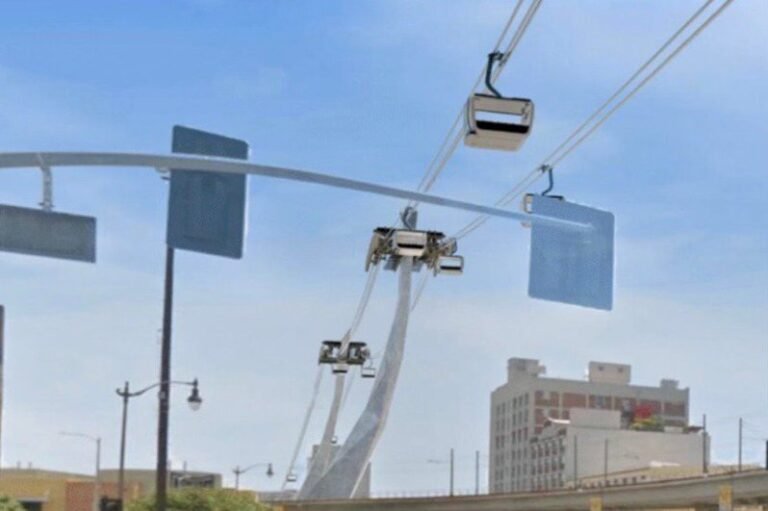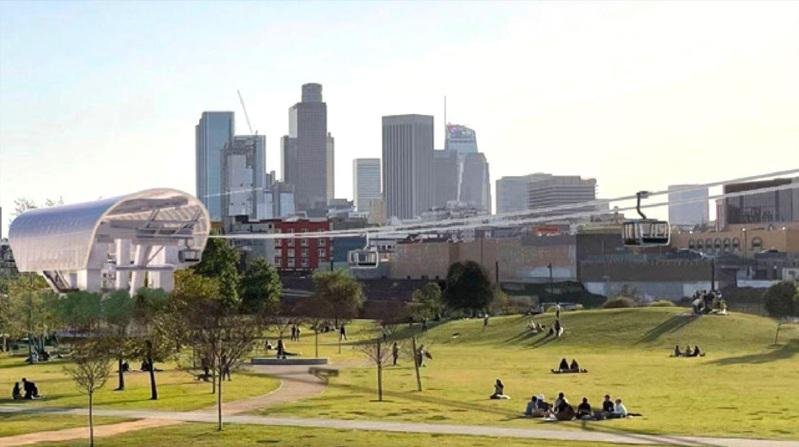
Addlos angelesUnion Station andDodgeThe Los Angeles Aerial Rapid Transit (LA ART Gondola) for the stadium has recently been approved by the Los Angeles Metropolitan Transportation Authority, completing the first phase of the overall development project.Cable Car ProjectChinatownWill it bring business opportunities or burden? The two camps for and against the project are still in a tit-for-tat confrontation, laying the foundation for uncertainties in the next three phases of the development project.
The Los Angeles City Council held a special meeting on the 22nd and planned to increase the requirements for on-site assessment of the project’s impact on local traffic. It is believed that the move could be seen as the Los Angeles City Council adopting a more cautious attitude towards development projects.
Proponents of the cable car development project believe that the cable car project will bring people and business opportunities to Chinatown, and that it is a once-in-a-lifetime opportunity to revitalize Chinatown’s economy. Li Jinsheng, president of the Chung Wah Association, said Chinatown’s economy has declined over the past ten years. With the relocation of Dahua Supermarket, the closure of large businesses such as Han Palace, and the severe blow caused by the epidemic, Chinatown’s economy situation is deteriorating, and large-scale development projects are needed to bring Chinatown back to life. He believes that the completion of the Dodge Cable Car will bring people and business opportunities to the areas along the way, and the benefits will certainly outweigh the losses.
However, Chung Wah Association advisor Cai Huiling said that as a Chinatown resident and business owner for more than 30 years, she strongly opposes the cable car development project. He said Chinatown has a high proportion of elderly people, many of whom are low-income, and many of whom commonly walk around the neighborhood. The cable car passing through Chinatown will cause great psychological pressure on local residents and businesses. Will it fall and kill the businessman? Because the area is in the Los Angeles seismic zone, there are many hills and slopes around it, and the soil has become loose over the years, so it is difficult to say whether the foundation of the cable car is stable. For example, Tsai Huiling said the proposed cable car’s large gondola would travel less than 30 feet above the community’s homes and as much as 26 feet above the state historic park near Chinatown. The cable car operates 19 hours a day, 365 days a year. From 5 a.m. to midnight, a Gondola will take off every 23 seconds, which will have a great impact on residents’ safety, noise and privacy. Additionally, there are schools in nearby Chinatown and near the 110 Expressway, all of which pose serious safety risks.
Cai Huiling said she has been doing business in Chinatown since 1991 and parking in Chinatown has been a problem for many years. They believe that cable car tourists will not bring business to Chinatown, but will instead compete for Chinatown’s parking resources, making the parking problem worse for Chinatown’s guests.
He believes that the cable car passengers are primarily Dodger Stadium spectators. Their purpose is to go to Dodger Stadium to watch the game, so a small portion of people have time to go to Chinatown for consumption and sightseeing, let alone live in Chinatown. For a long time. He believes the real solution to the problem is for the government to use buses to transport Dodger spectators directly to the stadium.
Chinatown community organizer Jenny said that the construction of the Dodge Cable Car will go through four major stages, through four departments: first, the Los Angeles Metropolitan Transportation Authority (currently the Transportation Authority has passed the proposal); The second step would be for the Los Angeles City Council, led by 15 city councilors, to discuss the proposal, and if it receives a majority of 8 votes it would be passed. The third step is the California Parks Department, which will review and approve the creation of state parks near Chinatown included in the project; Four steps ahead is Caltrans, the California Department of Transportation, which is responsible for environmental assessment and approval of Highway 110, where the cable car passes. Currently, only the first phase of the development project has been completed, and there are still three phases left.


los angeles